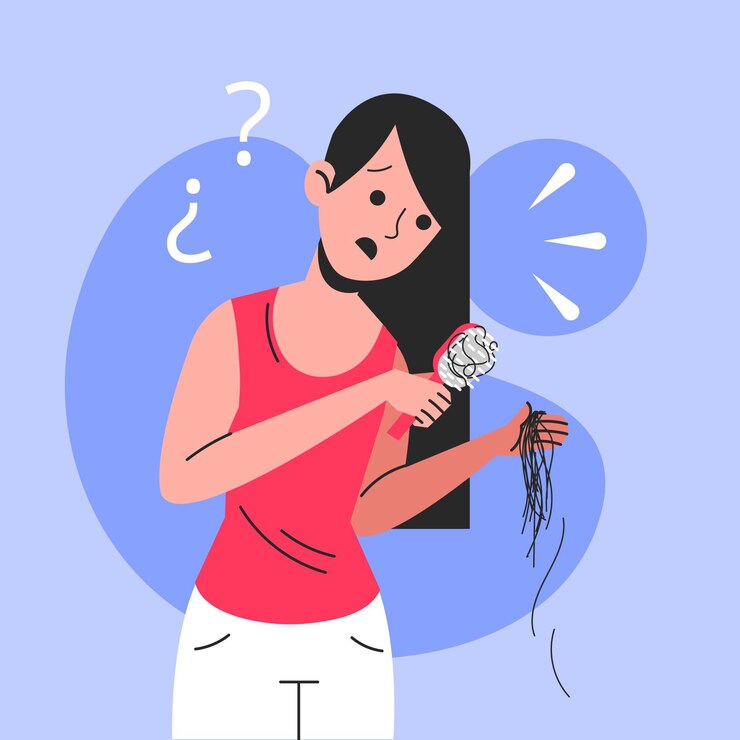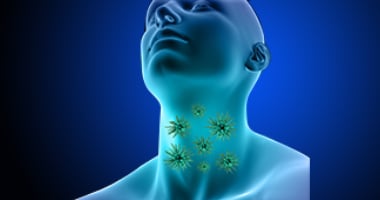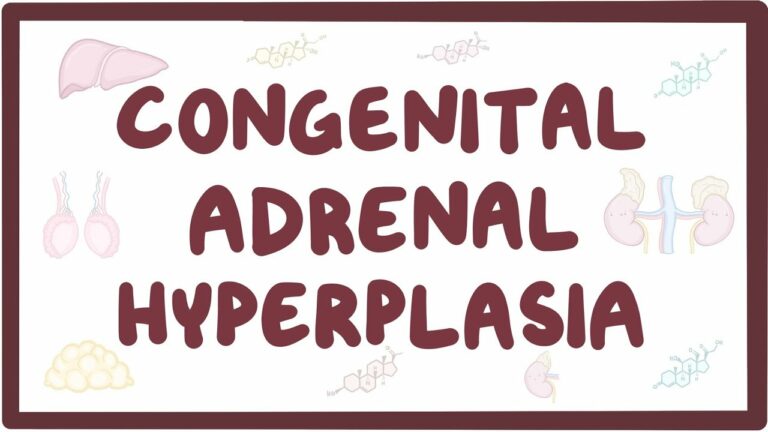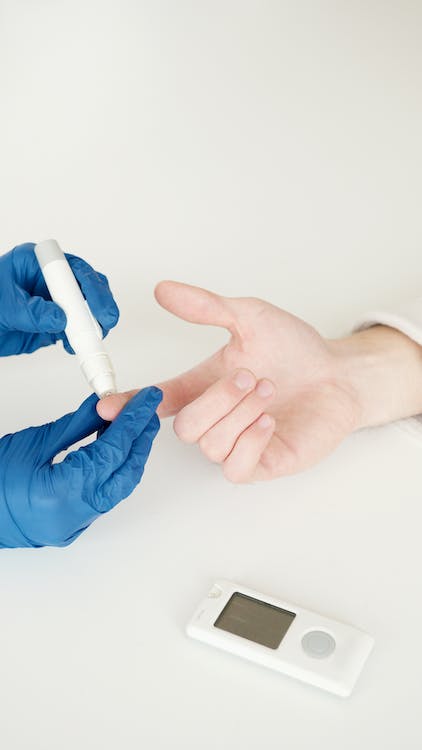Hair Loss and Thyroid Disorders Understanding the Connections
Table of contents
Introduction
Alopecia is a condition in which there is a temporary or permanent loss of hair. This could be seen as hair thinning or falling off of hair. From medications to disease conditions and genetics, different things have been attributed to alopecia. One of these is hormonal imbalance.
The thyroid gland is a butterfly-shaped gland located below the larynx. It produces the hormones thyroxine and triiodothyronine which function in body metabolism. The thyroid hormones have been implicated in hair loss according to studies. This makes it imperative to understand how hair growth works and the possible links between alopecia and the thyroid. Hair has three phases:
Anagen phase: This refers to the growth phase. 90% of the hair on the body is in this phase and is actively growing.
Catagen phase: It is a transition phase in which about 1% of air does not grow in a part of the body at one time.
Telogen phase: This is the last phase and it is the phase in which about 50 to 100 hair is shed per day. It signals the beginning of new hair growth.
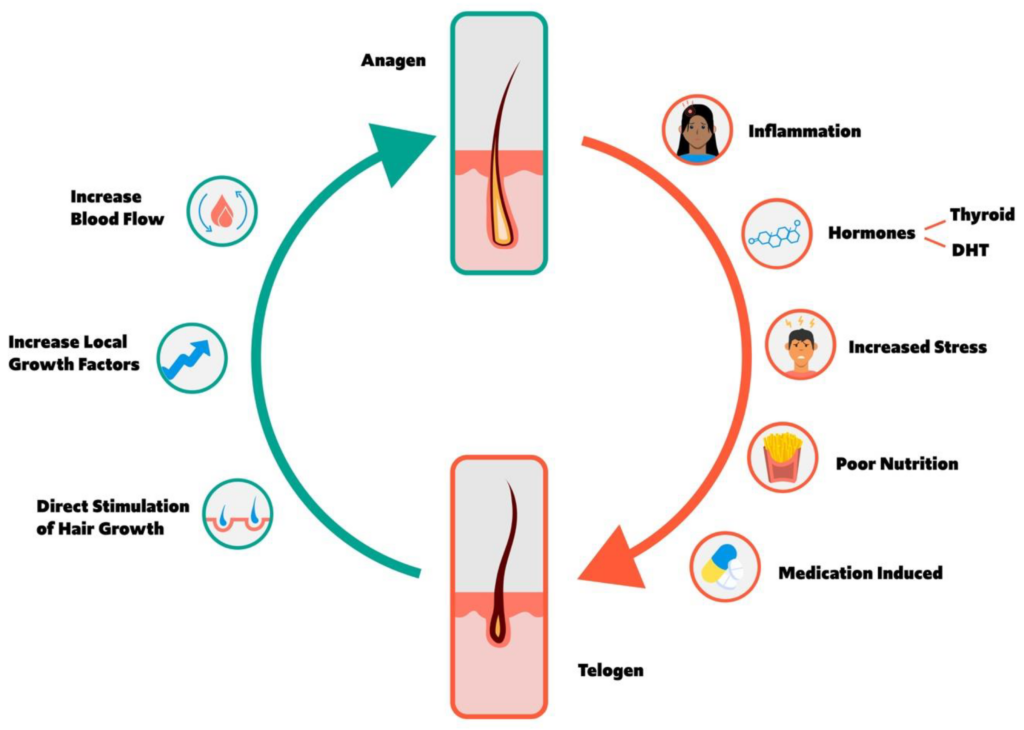
Causes of Thyroid Related Alopecia
The thyroid gland produces hormones that aid in metabolism. Its task is to regulate hair growth cycles and stimulate the hair follicles, balancing the production of sebum so that the hair is nourished and strong. Any disruption in the activities of these hormones (thyroxine and triiodothyronine) will lead to impaired body function and thus affect hair growth.
- Hypothyroidism and hyperthyroidism: These refer to an underactive and overactive thyroid. They can cause many symptoms, from weight gain to fatigue. Both conditions affect hair health and can cause hair loss, in addition to dryness, fragility, or thinning of the hair on the scalp and the rest of the body.
- Alopecia areata: An autoimmune disorder called alopecia areata frequently coexists with thyroid conditions like hypothyroidism. Smooth, circular bald patches can be seen on the scalp as a result of the immune system attacking the hair follicles and preventing their normal growth.
- Thyroid medications: The drugs carbimazole and propylthiouracil used as antithyroid drugs may have side effects of alopecia.
- Other autoimmune diseases: Scalp scarring is the cause of lupus-related hair loss. Hair loss due to lupus is brought on by scalp scarring. The hair follicle is replaced by scar tissue, so hair loss is permanent. Other autoimmune diseases of the thyroid gland include Grave’s disease and Hashimoto’s disease.
- Goiter: This is a disease of the thyroid gland mainly associated with iodine deficiency.
Symptoms of Thyroid Induced Hair Loss
Different signs can point to thyroid-induced hair loss. However, it is important to note that other signs may preclude hair loss but point to a possible thyroid pathology. Some of these are:
- A handful of hair loss: This is common with telogen effluvium
- Discrete, often circular hair patches: This type of alopecia is common in cases of alopecia areata.
- Unexplained weight gain or weight loss
- Fatigue and insomnia
- Drier-than-usual and thinning the skin
- Low or depressed mood
- Forgetfulness
- Constipation
- Brittle hair
- Swelling around the eyes
- Feeling unusually cold or increased sweating
- Nervousness and irritability
Diagnosis of Thyroid Related Hair Loss
The diagnosis of thyroid-related hair loss begins with a proper medical history. For individuals already suffering from a thyroid disorder, few tests may be conducted to rule out the possibility of other conditions. For undiagnosed patients, a thorough history would help rule out genetics, medication, and other possible causes such as hormonal imbalances in pregnancy, menopause, stress, use of chemicals, nutritional deficiencies, and adverse reactions to extreme heat or cold.
Different tests to determine the levels of thyroid hormones can be carried out by the physician. Imaging studies to determine the state of the gland include MRI, CT, and contrast radiography. This will be used to diagnose increases or decreases in size. Tissue biopsies may be done to detect tumor cells.
Treatment of Thyroid Related Hair Loss
Once a diagnosis is obtained, a visit to an endocrine specialist is important. Hair loss caused by the thyroid is typically treated by taking the appropriate medications to treat the disease. Use of hormones and medications that will help to regulate the hormone levels. Some treatment options include:
- Antithyroid drugs: Antithyroid medications, such as propylthiouracil, beta-blockers, and methimazole work by blocking the gland’s ability to make the thyroid hormone.
- Levothyroxine: This is used in the management of hypothyroidism
- Radioactive iodine: Radiation therapy may be used to manage hypothyroidism. This treatment can also be used to manage cancer-induced thyroid problems.
- Surgery: Surgery entails partial or complete thyroid gland removal, which may cause hypothyroidism. This is used to manage hyperthyroidism, goiter, and tumors of the thyroid gland.
- Minoxidil: This is a topical solution that is applied to the scalp and it is approved for use in alopecia.
- Finasteride: It is a prescription drug in a pill form that is used mostly to treat male pattern baldness. It is not recommended for pregnant or women considering getting pregnant.
- Capillary mesotherapy: It is a technique of microinjections of amino acids, multivitamins, minerals, trace elements, and vasodilators intradermally. It is done via painless punctures into the scalp. These supplements then aid in hair follicle maintenance and function.
- Platelet Rich Plasma (PRP): This is the injection of your platelet into the scalp. This is because platelets are good for regeneration and growth.
- Laser therapy: Low-frequency laser therapy is used in the management of thyroid problems.
- Hair transplant: This is a fast-growing industry for the management of alopecia. It is not usually recommended in cases of thyroid disorders since there is improvement in a few months following treatment. Patients who do not feel comfortable may opt for this option.
Are there any lifestyle changes that can help prevent or manage thyroid-related hair loss?
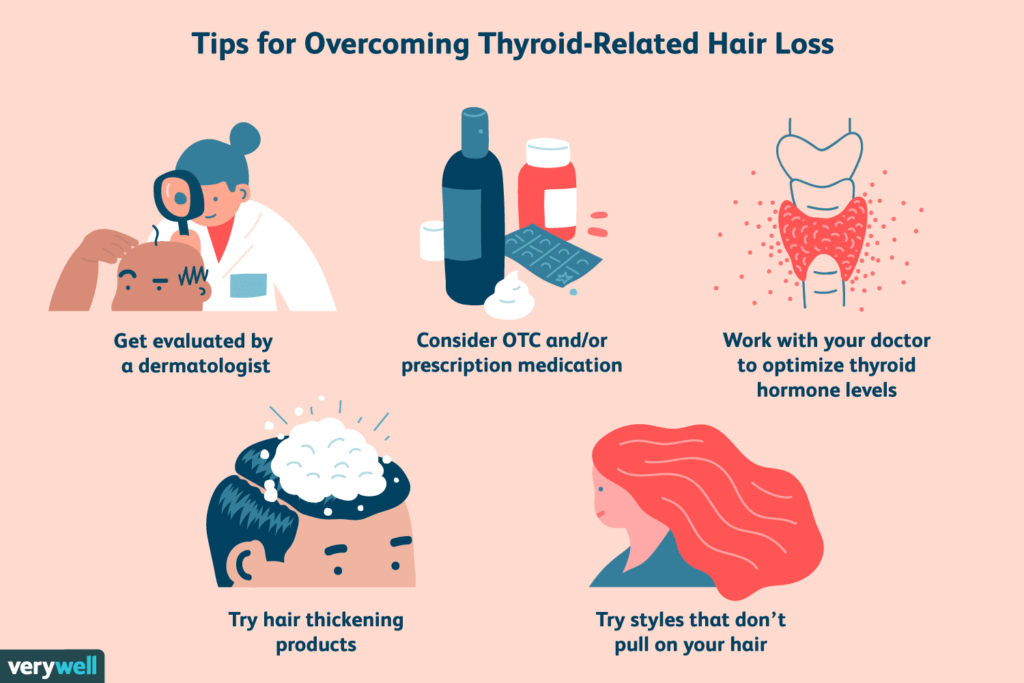
It is possible to control thyroid-related hair loss by making a few significant lifestyle adjustments. A good place to start is with a nutritious, well-balanced diet that contains essential vitamins and minerals like iron, zinc, and biotin. Along with consistent exercise and enough sleep, incorporating stress-reduction strategies into your daily routine can aid in promoting healthy hair development. It is crucial to speak with a healthcare professional to discuss any worries and discover the best course of action for your particular needs.
The diagnosis of thyroid disorder is a manageable one that would require dedication and consistency. It is essential to modify and improve personal lifestyles to improve the quality of life. The use of supplements and foods rich in biotin, iron, and omega-3 fatty acids is encouraged since they improve hair quality.
The information provided in this blog is for educational purposes only and should not be considered as medical advice. It is not intended to replace professional medical consultation, diagnosis, or treatment. Always consult with a qualified healthcare provider before making any decisions regarding your health. Read more


